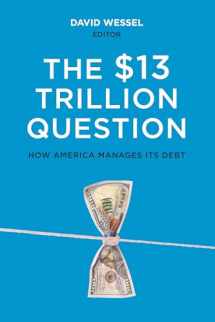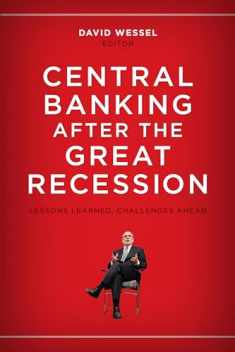
The $13 Trillion Question: Managing the U.S. Government's Debt
ISBN-13:
9780815727057
ISBN-10:
0815727054
Author:
David Wessel
Publication date:
2015
Publisher:
Brookings Institution Press
Format:
Paperback
177 pages
Category:
Economic Policy & Development
,
Economics
,
Public Finance
,
Finance
,
Governmental
,
Accounting
FREE US shipping
Book details
ISBN-13:
9780815727057
ISBN-10:
0815727054
Author:
David Wessel
Publication date:
2015
Publisher:
Brookings Institution Press
Format:
Paperback
177 pages
Category:
Economic Policy & Development
,
Economics
,
Public Finance
,
Finance
,
Governmental
,
Accounting
Summary
The $13 Trillion Question: Managing the U.S. Government's Debt (ISBN-13: 9780815727057 and ISBN-10: 0815727054), written by authors
David Wessel, was published by Brookings Institution Press in 2015.
With an overall rating of 4.1 stars, it's a notable title among other
Economic Policy & Development
(Economics, Public Finance, Finance, Governmental, Accounting) books. You can easily purchase or rent The $13 Trillion Question: Managing the U.S. Government's Debt (Paperback) from BooksRun,
along with many other new and used
Economic Policy & Development
books
and textbooks.
And, if you're looking to sell your copy, our current buyback offer is $0.3.
Description
The underexamined art and science of managing the federal government's huge debt.Everyone talks about the size of the U.S. national debt, now at $13 trillion and climbing, but few talk about how the U.S. Treasury does the borrowing—even though it is one of the world's largest borrowers. Everyone from bond traders to the home-buying public is affected by the Treasury's decisions about whether to borrow short or long term and what types of bonds to sell to investors.What is the best way for the Treasury to finance the government's huge debt? Harvard's Robin Greenwood, Sam Hanson, Joshua Rudolph, and Larry Summers argue that the Treasury could save taxpayers money and help the economy by borrowing more short term and less long term. They also argue that the Treasury and the Federal Reserve made a huge mistake in recent years by rowing in opposite directions: while the Fed was buying long-term bonds to push investors into other assets, the Treasury was doing the opposite—selling investors more long-term bonds.This book includes responses from a variety of public and private sector experts on how the Treasury does its borrowing, some of whom have criticized the way the Treasury has been managing its borrowing.


We would LOVE it if you could help us and other readers by reviewing the book
Book review

Congratulations! We have received your book review.
{user}
{createdAt}
by {truncated_author}



